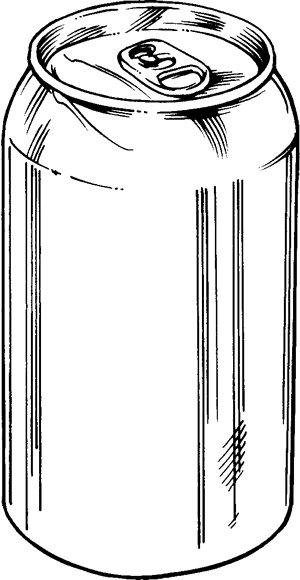
Russian tortoises, with their unique personalities and fascinating behaviors, can thrive in either setting, but the choice often boils down to several important factors. You’ll want to consider your living situation, the climate where you live, and your ability to provide the right care. Trust me, this isn’t just about what looks good on Instagram—it’s about creating a healthy and happy life for your tortoise!
Understanding the Russian Tortoise
Before diving into whether they can live indoors or outdoors, let’s chat a bit about what makes Russian tortoises tick. These fascinating reptiles are native to the dry, desert-like regions of Central Asia. Known for their hardy nature, they can adapt to a range of environments. However, if you’re going to keep one, knowing a few basics can make a big difference.
First off, these tortoises need plenty of sunlight. In the wild, they soak up the sun’s rays, which is essential for their shell growth and overall health. They also need a diet rich in leafy greens and should be given access to safe places to dig and explore. So, when deciding where to house your tortoise, keep in mind that their needs do vary between indoor and outdoor living.
You might be wondering how their size plays into this. Russian tortoises are relatively small compared to other tortoise species, growing to about 8 to 10 inches long. This compact size means they can adapt to different living spaces as long as those spaces are safe and enriching.
Indoor Living Conditions for Russian Tortoises
Keeping a Russian tortoise indoors can be a great option, especially if you live in a colder climate. But here’s the thing: you’ll need to create a mini desert for them. Imagine transforming a corner of your living room into a small slice of their natural habitat. You’ll want to set up a spacious enclosure, preferably 4 feet by 2 feet.
Make sure to include substrate like coconut coir or aspen shavings, which mimic their natural environment. They love to burrow, so having a few inches of substrate will allow them to dig and explore. You can also add some hiding spots using rocks or commercial hides to give them that cozy feeling they crave.
Lighting is critical too. You’ll need a good UVB light to ensure your tortoise gets the essential rays they’d typically soak up outside. This light helps them synthesize vitamin D3, crucial for their health. And don’t forget to maintain a temperature gradient in the enclosure—keeping one side warmer and one cooler mimics the basking spots they would seek outdoors.
Outdoor Living Conditions for Russian Tortoises
Now, if you’re leaning towards letting your Russian tortoise live outside, you’re in for a treat. Russian tortoises can thrive in a secure outdoor garden that offers natural sunlight and space to roam. However, it’s essential to set up a safe and controlled environment to protect them from predators and ensure they don’t escape.
First, create a secure pen with a solid barrier at least 12 inches high, as these little guys can climb. The area should be free of chemicals, pesticides, and other hazards. Think of it as building a safe fortress for your tortoise.
Additionally, providing areas of shade is important. A simple wooden structure or a few strategically placed rocks can offer shelter from the sun during the hottest parts of the day. Just like you wouldn’t want to bake under the sun all day, neither does your tortoise! Also, make sure there’s fresh water available at all times, as hydration is crucial for their well-being.
Comparing Indoor vs. Outdoor Living
When it comes to deciding between indoor and outdoor living for your Russian tortoise, both options have their ups and downs. Here’s a quick breakdown to help you weigh your choices:
- Indoor Living: Controlled environment, protection from predators, easier to monitor health.
- Outdoor Living: Natural sunlight, space to roam, allows for natural behaviors.
Choosing indoor living can mean more control over temperature and safety. On the flip side, outdoor living can provide a more stimulating environment where they can engage in natural behaviors, such as digging and basking. As a tortoise owner, your goal is to balance their needs with your lifestyle.
It’s also worth noting that some owners choose a hybrid approach: letting their tortoise enjoy outside time during the day and bringing them indoors at night. This can give them the best of both worlds!
Common Challenges and Solutions
Every environment comes with its challenges, and keeping a Russian tortoise is no exception. If you decide on an indoor setup, you might face issues like humidity control and ensuring they get enough natural light. Investing in a good UVB lamp and a thermostat can go a long way in addressing these concerns.
For outdoor living, the biggest challenge is probably predator protection. You have to be aware of local wildlife, such as raccoons or dogs, that may see your tortoise as a snack. Using a sturdy enclosure that can withstand these encounters is vital.
Another consideration is the seasonal changes. In colder climates, Russian tortoises will need to come indoors during winter months. This means preparing a proper indoor habitat to transition them back into when the temperature drops.
Final Thoughts: Making the Right Choice
Ultimately, whether your Russian tortoise lives indoors or outdoors depends on your circumstances and what you think will provide the best quality of life for your pet. Both environments can work as long as you make the effort to cater to their needs.
Take a moment to reflect on your living situation, climate, and the time you can dedicate to their care. Whichever choice you make, remember that the priority is creating a safe, enriching habitat where your tortoise can thrive. After all, your shelled buddy deserves nothing less than the best!

